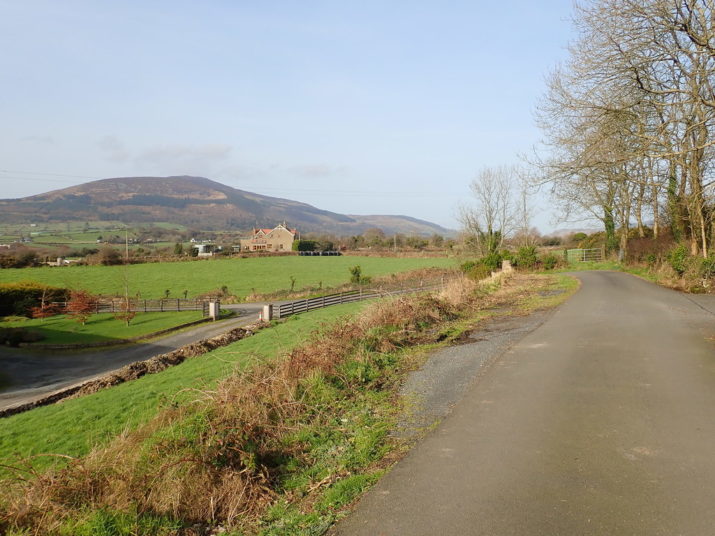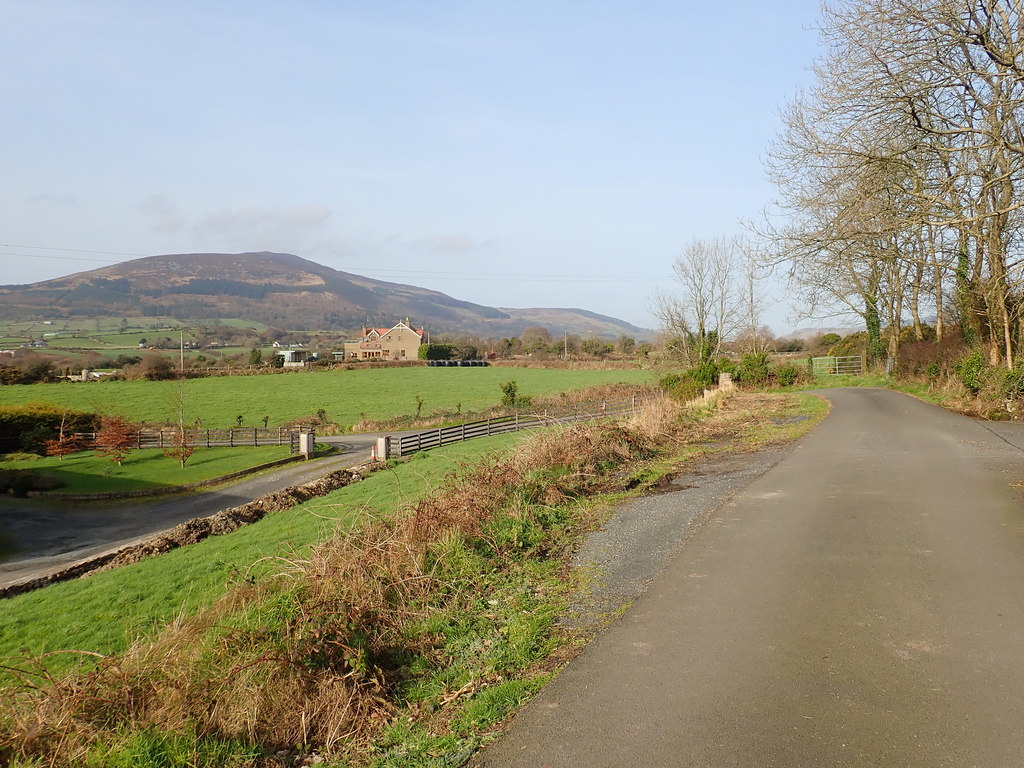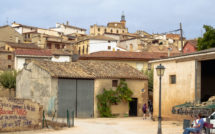
Immigration to Rural Communities in Europe: Necessary Evil or Transformative Social Process?

This is part of our special feature on Rurality in Europe.
Migration to small towns and rural places, like those of my childhood in Northern Ireland, has been witnessed across many countries of the Western World, including Norway, Sweden, Greece, and Spain. The movement of migrants from east to west was particularly notable during the expansion of the EU in 2004 and again in 2007. This provided opportunities for Central and Eastern Europeans (CEE) to take advantage of freedom of movement, something that was at the heart of the European project. Of course, it is not quite as simple as that, and as any discussion on migration shows, the notion of push and pull factors does not properly encapsulate the complexity of migration. It is complex as it relates to a range of motivations and aspirations held by a range of individuals seeking to move. States influence the capacity of these individuals to realize their desires as they sustain borders of varying degree of porosity, determining who can move and with what rights they are able to do so. Equally, the context of the place of arrival has a bearing on how migrants are received, what they can do and ultimately how they “get on” in their everyday lives. In this way, social, economic, and cultural factors and actors influence the actions of individuals and. To explore the case of Northern Ireland, I draw on qualitative research that I have been doing there for over fifteen years with different types of migrants, including workers in the agri-food sector, refugees, and asylum seekers. The stories of these individuals are embedded in the socio-economic history of Northern Ireland, from which can be identified some of the perceived main challenges associated with migrants’ integration.
Northern Ireland
Geographically and economically, Northern Ireland is a peripheral area of Europe, located on the western edge of the continent. It lies within the jurisdiction of the UK and, at the end of January 2020, it left the EU. It has a relatively weak economy compared to the rest of the UK: it has an inflated public sector, lacks inward investment, and has low levels of productivity and high levels of economic inactivity (NISRA 2020). It shares a land border with the Republic of Ireland. Civil unrest prevailed in Northern Ireland from the mid-1960s to the mid-1990s, after which a “peace process” was instigated. There is a prevailing discourse of “two communities” as denoted by green and orange politics where the majority identify with either Catholic or Protestant traditions respectively. This is symbolized through shared customs and rituals such as Orange Order Parades and painted murals and curbstones. Community relations in the region for a long time translated to relations between these main religious groups. Today, serious divisions remain, including segregated residential settlements, schooling, and domestic practices.
The proportion of the population in Northern Ireland that was born outside of the UK and Ireland rose from 1.5 percent to 4.5 percent between 2001 and 2011 (NISRA 2013); this clearly overlapping with the enlargement of the EU in 2004 and again in 2007 as a total of twelve Eastern European countries acceded to the Union. Many new arrivals were from Poland, and before long Polish became the main second language spoken (McAreavey 2017b). More recent migratory movements have been from Romania and Bulgaria, marking a rather different type of migration, with new arrivals having fewer qualifications and more limited potential to fully participate in the labor market.
The challenges of integration: beyond green and orange
Policymakers and researchers alike have been interested in the question of social relations between new arrivals and longer established residents. Keen to ensure that basic aspirations of a cohesive society are upheld, including social justice, policymakers develop integration policies that encourage positive outcomes following migratory movements. Integration policies tend to be practical and largely one dimensional. For instance, they may include initiatives that encourage learning the local language or social orienteering but fail to take account of wider social practices. For instance, the legacy of religious divide in Northern Ireland means that space is contested. Consequently, there is extensive residential segregation along an ethno-religious divide as some areas are predominantly Catholic or Protestant (Paris and Frey 2018). This is something that new arrivals are forced to navigate, often with little knowledge about the local context. As a result, some migrants are confined to low quality housing in undesirable areas that is rejected by local residents.
A more substantive problem with integration policies more generally is that they fail to pay sufficient attention to the fact that societies are complex and stratified. Societies are not cohesive in the first place, and cohesiveness is not something that can be achieved via an integration policy. For instance, social divisions emerge due to different religious affiliations, educational experiences, or as a result of gender inequalities. The reality of integration is that there is no “one” rural in Northern Ireland to which an individual can belong. One of my research respondents appreciated this complex social challenge: “You cannot integrate into the countryside because they want you to pick a side, which I am not going to do.”
At the same time, migrants’ lives are diverse and retain cobwebs of connections spanning transnational borders. Migrants often make choices about the extent to which they will “integrate” within a new society, negotiating attachment and belonging according to their circumstances, not necessarily choosing to belong to a single cultural group (Anthias 2013; Ryan 2018). During the boom years of the Irish economy in the early 2000s, for instance, I interviewed a number of migrants who actively chose to maximize income by working all of the hours they could. They had no interest in integrating into the local society beyond engagement with the economy. Therefore, creating a context for migrant incorporation is at the very least challenging. This is heightened in a non-metropolitan setting where other difficulties include persistent long-term structural challenges and short-term responses to integration, invisibility, relative isolation, and being tied to employers for various essentials such as housing and visas.
Migration is at the same time considered a good and a bad thing, depending on the perspective of the individual. Where it is heralded as positively changing a society, the potential to do so is premised on opportunities for upward social and economic mobility. The degree to which this occurs varies according to context and also in relation to the type of individuals who are moving. Many of the Eastern European migrants who moved across Europe in the early 2000s were highly qualified and accepted a life where they worked in jobs for which they were over qualified. I recall, for example, a Lithuanian woman who had two degrees, was qualified as a teacher, and worked as a cleaner in Northern Ireland. She and others consider this “trade-off” as part of the “cost” of being a migrant, as it affords access to education and thus provides the ability to create better life chances for the next generation (McAreavey 2017b).
Across Europe, migrants have been largely welcomed in small towns and rural communities having been shown to transform non-metropolitan spaces and boost stagnant rural and regional economies by bringing with them entrepreneurship, cosmopolitan ideas, and transnational connections. At the same time voices of dissent are also audible among factions of society who regard the arrival of newcomers as placing a strain on local services, “stealing local jobs,” and generally draining local resources. My research uncovered different attitudes towards migrants in Northern Ireland. Here too, over the last decade or more, civil society organizations have gone to great lengths to welcome new arrivals, creating homework and sports clubs as a means of helping them mix with locally-born children and providing English language classes, to name but a few of their activities. Everyday acts of conviviality and cosmopolitanism were apparent.
In Northern Ireland, policymakers funded different integration interventions, including those to develop English language skills or to promote different cultures. To be sure, these initiatives provided immediate and vital support to new arrivals. However they suffered from a flawed approach to diversity in that they celebrated cultural identities of different groups without addressing deeper seated structural economic and political inequalities or social attitudes, such as the “chill factor” that an advocacy worker described to me was used by front desk workers in healthcare when dealing with migrants. Even where attempts were made to address structural inequalities, such as the lack of recognition of overseas qualifications, lack of proper monitoring undermined the efficacy of the initiative (Shortall and McAreavey 2017).
The same, only different?
Migrants have for a long time filled precarious roles in the labor market, undertaking dirty and difficult work. This was evident in the nineteeth century when Irish migrants (navies) laid the commercial canal system in England and Chinese workers built the transcontinental railroad. Many of the same issues of precarity resonate today and likewise include dirty and difficult work, lack of employment contracts, and wage deduction for services such as housing. While it is important to note that good employment practice also exists, a significant number of migrants working in the agri-food sector experience poor employment conditions, filling jobs that the locals purportedly refuse to do. There is a commonly held belief that migrants put up with their jobs because conditions or wages are better than in their own country or that it is a necessary evil if food is to remain cheap. These narratives provide simplistic explanations for the over-representation of migrants in the agri-food sector. However, deeper structural forces are often at play; indeed it is argued that the extensive use of migrant labor is socially constructed (Sharma 2001). This certainly helps to explain the over-representation of semi-skilled migrants in the agri-food sector and the alleged shortage of local workers. The truth is that it is due to political factors that extend beyond a labor shortage.
The structural transformation of the agri-food sector has directly resulted in the over-representation of semi-skilled migrants working in flexible and precarious roles across rural Europe. Increased pressures of extracting more and more profit from the agriculture industry has extended food chains. Whereas in the past they used to be “short,” with few actors mediating between farmers and retailers, food chains today are long and include multifarious interests—processors, distributors, retailers, financial institutions, and suppliers of inputs such as fertilizers.[1] Large corporations control more and more of this chain and as such can exert significant pressure on producers, squeezing profit margins in the process. Survival may therefore rely on increasingly intensified production, i.e. getting more output for less. There is less room for maneuver and much of the uncertainty is pushed onto the workforce. This has led to the widespread use of gang masters and recruitment agencies to recruit a pliable and flexible workforce, typically sourced from within the migrant community. The corresponding employment regime can leave workers feeling dehumanized and exploited. This is visible through bullying tactics on workplace front lines, manipulating the wages of workers, and instilling a general regime of fear and uncertainty. The following quote describes how employers skirt around minimum wage requirements by paying for piecework, i.e. the weight of harvest collected, even though this is illegal:
On mushroom farms I hear they are exploited…So somehow they are told “okay you have been working for sixty hours, but actually when you look at the weight of mushrooms you gathered, it is as if you were working fifteen hours.” And quite often they are paid for fifteen hours… it is piecework.
Other individuals talked about how supervisors in meat processing plants would stand over them shouting at them to work faster. Recruitment agencies target particular places, which influences subsequent flows and migration patterns:
The employers! I keep saying the same. It is exactly the same story like 2005 or 2006… So, all those agencies they have branches over there, and they recruit people. And it was exactly the same with me and with the Poles, and they are doing exactly the same with them. They, which is very crude what I say now, they import people like German cars, refrigerators… all this stuff which you have encouraged. […] So you know it is like [meat processing company] opened this line with […] the view that they will go to Slovakia to employ people.
Some workers are recruited by an agency and move to a place about which they know nothing. They must comply with the regime in which they find themselves, otherwise they risk losing their home, as many jobs are tied to accommodation (which itself may be sub-standard and over-crowded). Employers can operate a regime of fear where workers do not know their rights and live in constant fear of what might happen. Fear is a small word, but the alarm and trepidation that surrounds some of the workers is visceral as a support worker makes clear:
The problem is that those girls don’t speak English and they cannot speak properly to the owner, they cannot speak for themselves and tell him what is going on. They have health issues after the incident [sexual harassment]… The problem is the work conditions, nobody checks the farms. They work long hours and they have climbed big heights to pick the mushrooms and nobody cares about them and people are afraid to talk because they are afraid to lose their jobs.
In short, employers have a lot of power over their workers.[2] Michael Carolan’s (2011) thesis about cheap food seems to be extremely pertinent: even though we have extensive access to cheap food, actual costs are not properly reflected in monetary costs. What is the cost for the workers? How, working in the conditions described above, can migrants contribute to the transformation of small towns and rural areas?
Future prospects: integration or segregation?
Current migratory movement to Northern Ireland differ substantially from the wave of migration in the early 2000s. Many migrants today are illiterate in their own language, look and dress differently, and have very little sense of where they are in the world—some migrants whom I interviewed were surprised to learn that Northern Ireland is part of the United Kingdom. The political context has also changed due to the exit of the UK from the European Union that takes full effect on January 1, 2021, following a transition period since the 2016 vote that led to this outcome and created an environment of hostility towards migrants, something that had previously gained a foothold in wider immigration policies of the UK (Goodfellow 2019). An advocacy worker explains:
We have a new wave of migrants. They have come from…Bulgaria, from Romania, and because they look, they dress differently…because they have darker colorations for instance. So, they are more visible…. And here ten years later, the atmosphere is different. And it changed around 2008, after the recession. So, there is not this welcoming culture. I mean I think that Brexit was, I think Brexit is about migration…
There is anecdotal evidence from those working in advocacy roles in Northern Ireland of some families returning home because of much more buoyant economic conditions there, particularly well-illustrated by the Polish example. However, some individuals and families who arrived in the 2000s have also remained and have had children born in their adopted home. Their experiences were such that they participated in civic and social events, their children mixing with children from locally-born families. These activities cement a sense of belonging and a sense of place. It was obvious from talking to some individuals that they had high levels of educational capital and had made informed choices as part of their migration pathway. Some of them worked in meat processing when they arrived, but moved on to work in jobs requiring higher level skills. They were able to experience upward mobility. This scenario contrasts with more recent immigrants’ experience.
Today, regular shifts at meat processing plants can last twelve hours and the pattern of work is such that days off differ each week. It is not a great surprise, then, that many migrants whom I recently interviewed talked about how they have little time to learn English, something that is recognized as a critical aspect of integration and an important tool towards becoming fully embedded in the local community. Perhaps more critically, though, is the fact that they have little desire to learn the language as they do not see it as being important for their everyday life. They are content to exist within their own ethnic group, for instance creating their own church group and straying little beyond their immediate neighborhood. Ultimately, this group of recent immigrants, and many of the previous wave, have not been interested in integrating into the community. As one charity worker told me:
…you cannot talk about integration… the Romanians or Bulgarians, they don’t know if they stay here for another half a year, or a year, or two years. And you know, the more I think about it, a lot of people arrived here, …even the Polish people because they have been here for now ten, even longer, fifteen years. And lots are not integrated at all if you have in your mind that you will go back [home], so you don’t want to integrate very much.
Towards a socially just and cohesive society
Social justice, which underpins notions of integration, is about being able to participate fully in a society—across economic, cultural, and political spheres. It occurs where there are fair and just relations between individuals in a society (Fraser 2005). A society that seeks to be socially just removes barriers to achieving these relations, such as institutional norms that deride some groups of people or destructive actions and attitudes. Removing these obstacles requires recognition of individuals as being equal, which translates to equal treatment in the labor market and regarding access to services such as housing. However, the exploitation of migrant workers in the agri-food sector is a clear example of mis-recognition, where migrants are perceived to be unworthy of equal treatment. They are grouped as a particular category of individuals for which certain treatment is “expected.” This categorization is harmful for the individuals involved (McAreavey 2017a), but also for the receiving society as they are confined to neighborhoods with low quality housing and provided little opportunity to mix outside their own group. This represents a great loss as the potential for those individuals to contribute more widely to society is overlooked and actively eliminated. Meanwhile, for the agri-food sector, it perpetuates a system of exploitation and promotes “cheap” food, the real cost of which might not be much higher if the potential contribution of migrants within the locality could be realized. This cost internalization might then also help to transform small towns and rural economies to become exemplars for socially just communities.
Ruth McAreavey was born in Northern Ireland and is a Reader in Sociology at Newcastle University (UK). Her research is primarily focused on rural society, particularly migration to rural and regional places. She is currently co-editor of Sociologia Ruralis.
References:
Anthias, Floya. 2013. “Moving beyond the Janus face of integration and diversity discourses: towards an intersectional framing.” The Sociological Review 61:323-343.
Carolan, Michael. 2011. The real cost of cheap food. London: Routledge.
Fraser, Nancy. 2005. “Reframing Justice in a Globalizing World.” New Left Review 36:31.
Goodfellow, Maya. 2019. Hostile Environment: How Migrants Became Scapegoats. London: Verso Books.
McAreavey, Ruth. 2017a. “Migrant Identities in a New Immigrant Destination: Revealing the Limitations of the ‘Hard Working’ Migrant Identity.” Population, Space and Place 23(6):1-4.
McAreavey, Ruth. 2017b. New immigration destinations: migrating to rural and peripheral areas. London and New York: Routledge.
Paris, Chris and Joe Frey. 2018. “Demographic trends and changing housing systems in Northern Ireland.” Housing Studies 33(8) 1264-1285.
Ryan, Louise. 2018. “Differentiated embedding: polish migrants in London negotiating belonging over time.” Journal of Ethnic and Migration Studies 44(2):233-251.
Sharma, Nandita. 2001. “On Being not Canadian: The Social Organization of ‘Migrant Workers’ in Canada.” Canadian Review of Sociology and Anthropology 38(4):415-40 (Fall).
Shortall, Sally and Ruth McAreavey. 2017. “Gender, Migration and Development: Can advocacy groups be more of a hindrance than a help?” Social Sciences 6(2):1-17.
Triadafilopoulos, Triadafilos. 2004. “Building Walls, Bounding Nations: Migration and Exclusion in Canada and Germany, 1870–1939.” Journal of Historical Sociology 17(4):385-427.
[1] Farmers’ markets and other community based food initiatives are a direct attempt to shorten food supply chains.
[2] It is important to note that not all employers are “bad” and there are examples of employers treating their workers well and ensuring that they are not exploited. My research to date has focused on exploitation and poor employment practices.
Photo: Final bend in the descending Molly Road © Copyright Eric Jones
Published on November 10, 2020




